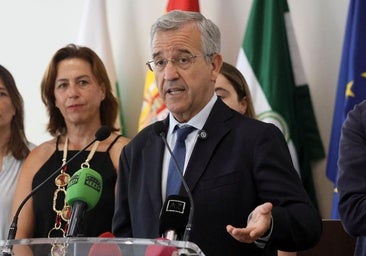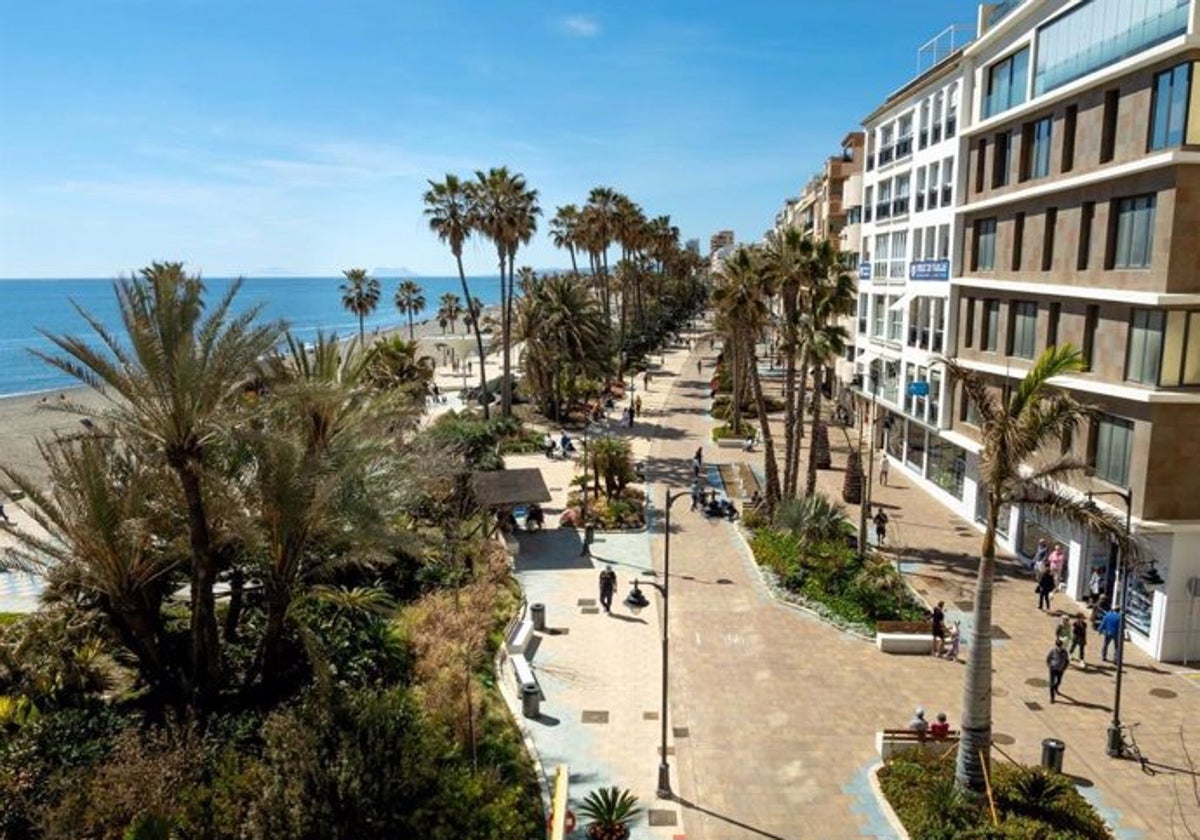The metamorphosis that has made Estepona a benchmark on the Costa del Sol
In recent years the town has undergone a transformation and modernisation with new facilities, population growth, a reduction in unemployment and an increase in the number of businesses
A pedestrianised town centre with restricted traffic; new social, cultural, sports and health facilities; a commitment to environmental sustainability and energy efficiency; the recovery of historic buildings and the opening of the promenade on the old N340 coastal road are just some of the projects that have taken place in Estepona on the Costa del Sol in recent years.
They all form part of the metamorphosis experienced by the town in a process of transformation and modernisation promoted by the current mayor, José María García Urbano, who was first elected in 2011. The changes have transformed the town into one of the benchmarks of the Costa del Sol.
The last of these achievements has been paying off the municipal debt through an economic policy of austerity and efficiency that has gone hand in hand with the strengthening of investments to improve the quality of life for citizens in a management model that has combined modernity with the maintenance of traditions and the promotion of culture and sport.
Noticia relacionada
Estepona achieves zero debt and is set to lower property tax by 20% on average
Estepona town centre has undergone a transformation with the regeneration of service infrastructures, paving and planting using species that are native to southern Spain, including trees and flowers on 130 streets and squares. In fact it has led to the town becoming known as 'the garden of the Costa del Sol'. The Orchidarium botanical park was created, which has become an international reference in the field of botany with 3,000 species of plants, half of which are orchids.
Opening to the sea
Avenida de España has been pedestrianised, creating a wide promenade and the 'Senda Litoral' (coastal footpath) project will connect the 21 kilometres of the municipality's coastline once the last five sections have been completed.
This process of urban transformation includes projects such as the remodelling of Calle Terraza, one of the main arteries of the town's road network, where priority has been given to pedestrians with the construction of a platform that makes the area feel more spacious. The construction of the Parque Central boulevard between San Lorenzo and España avenues will create a new pedestrian and leisure area.
An underground car park is also planned for this boulevard for 300 vehicles at a cost of 1 euro per day. This will join the four already in operation under this formula, with 2,000 spaces, as part of the municipal parking plan. In addition to these, there will also be a car park with 322 spaces under construction in the area around the church of El Carmen and the planned car park in La Lobilla.
In terms of facilities, the city has a modern theatre, a 70,000-square-metre fairground with 23 sports fields and 22 stands for cultural and social organisations; a new town hall that brings together all the municipal offices in a single building; and it has undertaken the construction of the high resolution hospital with its own funds for its transfer to the Junta de Andalucía.
Cultural spaces
The Mirador del Carmen cultural centre, located in a high-rise tower by the sea, has exhibition rooms, a music conservatory and the library of contemporary cultures. In terms of culture, Estepona has an open-air museum made up of 74 murals that decorate the façades of buildings in different neighbourhoods.
The recovery of the area around the Punta Doncella lighthouse as a space for leisure and enjoyment after more than a century closed to the public and the San Luis Castle; the construction of the athletics stadium, a climbing wall, calisthenics tracks and the awarding of the contract for the construction and operation of the municipality's indoor swimming pool are other projects being carried out at the moment.
A transformation accompanied by figures such as the increase in population by 12,746 people between 2011 and 2024, which places Estepona as the sixth largest town in Malaga province in terms of inhabitants; the reduction in unemployment, from 7,983 registered fourteen years ago to 3,550 last May; and the increase in the number of companies: today there are 6,602, which is 2,123 more than in 2011, according to INE data.
All this in a climate of political stability, since 2011 José María García Urbano has been governing with comfortable absolute majorities (today the Partido Popular political party has 17 of the 25 councillors in the town hall) and without the alleged cases of corruption that have tarnished the image and reputation of Estepona although the mayor does have an open court case for hiring a woman with whom he allegedly had an "intimate relationship" of friendship.


